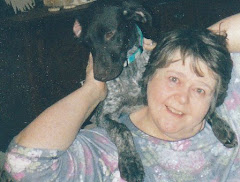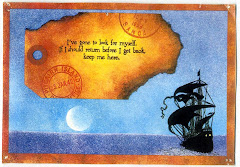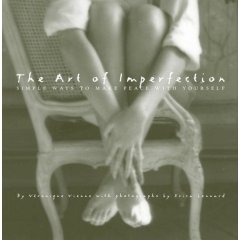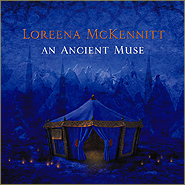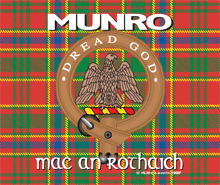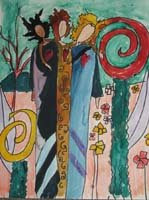(See, I am right, darn it!)
Once again I have been "corrected" by a blog reader who wanted to tell me that the Welcome button on my sidebar is incorrect.
When I first posted this I was corrected because I used the phrase "Ceud Mile Failte". I was told, rather snottily by some people, and nicely by others, that the correct spelling is "Cead." No, I used the spelling "Ceud" deliberately. To clarify things, I changed Gaelic to Scottish Gaelic.
But today, I get a "correction" saying that "Cead Mile Failte" is Irish Gaelic. For heaven's sake, read it correctly : "CEUD MILE FAILTE" - Scottish Gaelic. And yes, I know that it (both Irish and Scottish) means A Hundred Thousand Welcomes, but I shortened it to Welcome.
I suppose, to be ultra correct, I should present it as Ceud Mìle Fàilte, with the accent marks.
To be fair, I have noticed that Cead and Ceud are sometimes used interchangeably. And, when you Google Ceud, you still get 100 times more Cead results than Ceud. However, I am going to be a stickler on this point and continue to use Ceud.
I'm going to prove I'm right by showing a whole bunch of images I found with the word Ceud:
Maybe I should demonstrate the correct spelling of Ceud on my thong. But no one sees my underwear (and they are not thongs anyway). So perhaps I should let my dog advertise it instead:
They get the spelling right at The Country Squire Restaurant in Warsaw, NC (Owner Iris Lennon is of Scottish descent):
And at The Thistle House Bed and Breakfast in Granite Falls, NC:
And at the Texas Scottish Festival and Games:
They have Ceud spelled right on bumper stickers:
And on rubber stamps:
And on cross stitch pictures:
And on a pewter quaich (traditional Scottish drinking cup):
And on commemorative plates:
And on paper napkins:
And on decorative tiles:
You may wonder why I chose to use Ceud over Cead anyway, since I am of both Irish and Scottish descent. For one thing, I feel closer to my Scottish heritage, not having known about my Irish connection until about a half dozen years ago. Second, everyone knows about Irish heritage and symbols - leprechauns, harps, the claddagh, shamrocks and all that.
It seems to me that Scottish Gaelic or Celtic traditions and symbols are less well known. Aside from the ubiquitous bagpipes and tartans, there are several other national symbols of Scotland. For example, see the napkin and tile above, utilizing the thistle.
Do you know why the proud Scots use the thorny, humble thistle as a national symbol? There is a legend which relates how a sleeping party of Scots warriors were almost set upon by an invading band of Vikings and were only saved when one of the attackers trod on a wild thistle with his bare feet. His cries raised the alarm and the roused Scots duly defeated the Danes. In gratitude, the plant became known as the Guardian Thistle and was adopted as the symbol of Scotland.
Sadly, there is no historical evidence to back up the tale. But whatever its origins, the thistle has been an important Scottish symbol for more than 500 years. Perhaps its first recognisable use was on silver coins issued in 1470 during the reign of James III, and from the early 16th century, it was incorporated into the Royal Arms of Scotland.
The members of Scotland's premier Order of Chivalry, The Most Ancient and Noble Order of the Thistle, wear a collar chain whose links are made of golden thistles. The Knights and Ladies of the Thistle also wear a breast star which bears the thistle emblem and a motto which is regularly associated with it, Nemo Me Impune Lacessit - " no one provokes me with impunity".
Scottish Rampant Lion Flag
Another popular symbol of Scotland is the lion. It has been used as a heraldic device for many centuries by Scottish kings. William I of Scotland was known as "The Lion" after he introduced the lion symbol into his coat of arms. The Scottish lion has always been shown on the royal shield as being rampant, i.e. standing erect on the hind legs with the head in profile and forelegs extended.
There is a suggestion that perhaps the Kings of Scotland kept a real lion when in residence at the castles of Stirling and Edinburgh. Both castles have a building within the walls known as "The Lion's Den". This flag is really a flag to be used solely by Scotland's royalty, and so in theory at least its usage should be confined to use on state occasions. However, its image can be seen all over Scotland.
Sometimes the lion and the thistle are used together:
Another long-standing symbol of Scotland is the unicorn. The Royal Coat of Arms of Scotland, used prior to 1603 by the kings of Scotland, incorporated a lion rampant shield supported by two unicorns.
Valued for its associations with chastity, nobility, and freedom, the unicorn was a fierce, proud, and dangerous creature. He contended all those who would see him captured or oppressed, and would rather die fighting than surrender and face imprisonment or slavery. It is no wonder, then, that this creature was such a perfect symbol for the Scots, who for centuries struggled to remain independent and free of foreign influence.
Below, the unicorn is shown with other Scottish symbols: the lion rampant, the thistle and Scotland's national flag, the blue and white St. Andrew's flag, or Saltire.
Valued for its associations with chastity, nobility, and freedom, the unicorn was a fierce, proud, and dangerous creature. He contended all those who would see him captured or oppressed, and would rather die fighting than surrender and face imprisonment or slavery. It is no wonder, then, that this creature was such a perfect symbol for the Scots, who for centuries struggled to remain independent and free of foreign influence.
Below, the unicorn is shown with other Scottish symbols: the lion rampant, the thistle and Scotland's national flag, the blue and white St. Andrew's flag, or Saltire.
Final Note: Please no more harassing me about Cead/Ceud. Remember, although I appear to be a gentle soul, I have the fierceness of the Scottish unicorn and the roar of the Scottish lion in me. Nemo Me Impune Lacessit!











































